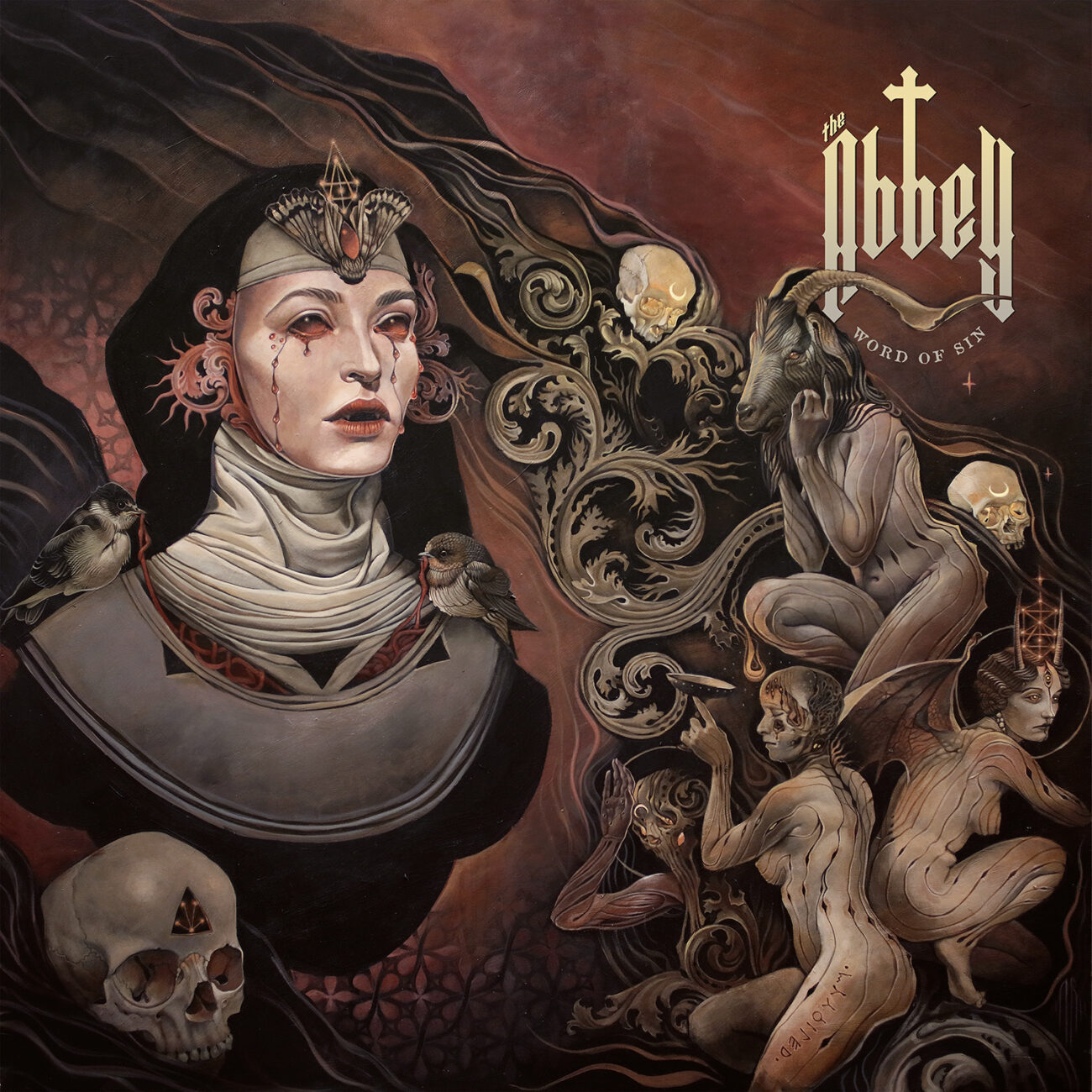Here’s the perfect formula for a chemical Rendez-Vous – review of The Abbey’s “Word of Sin”
When we talk about music, we tend to forget that this art is not composed only of the efficiency of sounds. A fundamental role in the success of an opus is played by the textual power and scenographic capacity of the invisible. Making architecture with notes, generating a story with the inflections of a riff. This is the work of an alchemist, the magic of artists. And The Abbey can safely say that they have discovered the secret formula.
Before exposing any secrets behind this project, let’s dive right into its intensity. “Rat King” is a calm entrance to the scene, which could paradoxically recall the early days of 2013 “Infestissumam” by Ghost; but beware: at the end the alchemist reveals his true intent and begins a two-faced ride, between the depths of doom and the guitar turns of progressive. Similarly, the next piece, “A Thousand Dead Witches” plays with this deception of genres, moving on hybrid sonorities and striking like lightning towards the final descent. A labyrinth of sensations, which maintains an atmosphere that tends to be distant in time.
The third track “Crystallion” embodies the concept of Finnish music veteran Jesse Heikkinen, whose intention is to collect and tell stories of a controversial occult past, starting from the legendary Aleister Crowley’s Abbey of Thelema. The building, located in Italy, among the exotic landscapes of Sicily, was the subject of various controversies in the 20s, up to the exile of Crowley by Italian dictator Benito Mussolini. So, on “Crystallion” Jesse Heikkinen’s voice reaches that scratchy nuance necessary to update the esoteric mythology lost in time. A spectrum that intertwines on a well-paced score.
The limit came came when I saw not myself amongst this beauty of creation
And my mirror was not from this world
where I saw no more this pale gaze of internal disgust
of which my star would shy away– From the 3rd track, “Crystallion”
“Starless” flows with the sweetness of the unknown, between the vocal inflections of a dark Natalie Koskinen (Shape of Despair) and a sound system stiff enough to keep the doom weight strong from the beginning to the end. With the following “Desert Temple” we find ourselves in front of a drum experience in better shape than ever. I could try to say that Vesa Ranta makes the most of not only his musical knowledge, for an insistent and varied rhythm, but manages, albeit behind the scenes of his instrument, to make his experience as a filmmaker palpable. For the first time, the drum becomes an essential element, in a chain of special effects, necessary for the narration.
My music is the channel where I can be as true and authentic as possible. It is also a somewhat safe way to explore and express the dark side of myself and the collective consciousness. Word of Sin may seem like a tremendously dark piece as a rock album, but it’s pretty lightweight for a doom metal album! The material proved so strong that it was obvious that it wasn’t going to be another side project. I think using the means of improvisation made the music sound more like its creator instead of it being forced to be this or that — and that seemed to work really well for us!– Jesse Heikkinen
These words of Heikkinen are the perfect formula for the alchemy of art. The spontaneity of sound, often overlooked in the name of plastic refinement, plays a central role in musical and inner discovery. And this naturalness also explains the ability of “Word of Sin” to expand into areas of hybrid genres. Capital proof of this talent is “Widow’s Will” – one of my favourites! This piece has the vintage sincerity of the 70s, and Natalie Koskinen warbles in the background like an old-time diva, a bride of oblivion like in Herzog’s Nosferatu.
With a powerful ensemble of guest artists – Jarmo Heikkinen on the lute, Joonas Karjalainen on additional keys, Mikko Kiiveri on additional percussions, Ossi Oikari on SFX, Kyösti Rautio for guitar and additional keys – The Abbey project manages to fly away from the snobbish restrictions of the musical canon, carrying forward a work that goes beyond the acoustic dimension and should be evaluated as a great theater of visual phantoms. In fact, Henri Arvola on bass and Janne Markus on guitar shine especially in the final moments of the album, where they can enjoy a fairly large space of action and evocation. The technique of the two artists is strengthened in the background areas, where the choir is saturated with progressive experimentation.
A story-oriented bipartition closes “Word of Sin”. Preceded by an explicit prologue, “Old Ones” evolves into the most sweetly atrocious farewell in recent years. Of flame and crystal, as well as the singing plot, the piece returns cautiously to the doom marches, without forgetting to surprise with gothic elevations, perfectly in tune with the debut concept.
In conclusion, “World of Sin” is what could be defined as the homunculus of sound, the sublime result of calculated but incredible pairings. The ultimate creature of the unraveled mystery, and one of the best debut rehearsals I’ve heard in years. So, let yourself be taught by the alchemy of spontaneity, which manages to dig deep into both the most educated ears and the most convinced consciences.
Crowley certainly would have sounded like this.
To be released on February 17 2023 via Season of Mist, with an excellent job of mixing and mastering, and a perfectly balanced length, “Word of Sin” is composed of nine tracks:
- Rat King (4:42)
- A Thousand Dead Witches (4:35)
- Crystallion (6:17)
- Starless (7:53)
- Desert Temple (4:32)
- Widow’s Will (4:23)
- Queen of Pain (5:22)
- Old Ones: Prequel (2:34)
- Old Ones (12:47)
Honorable mention also for the splendid cover art by Alexander Reisfar:
